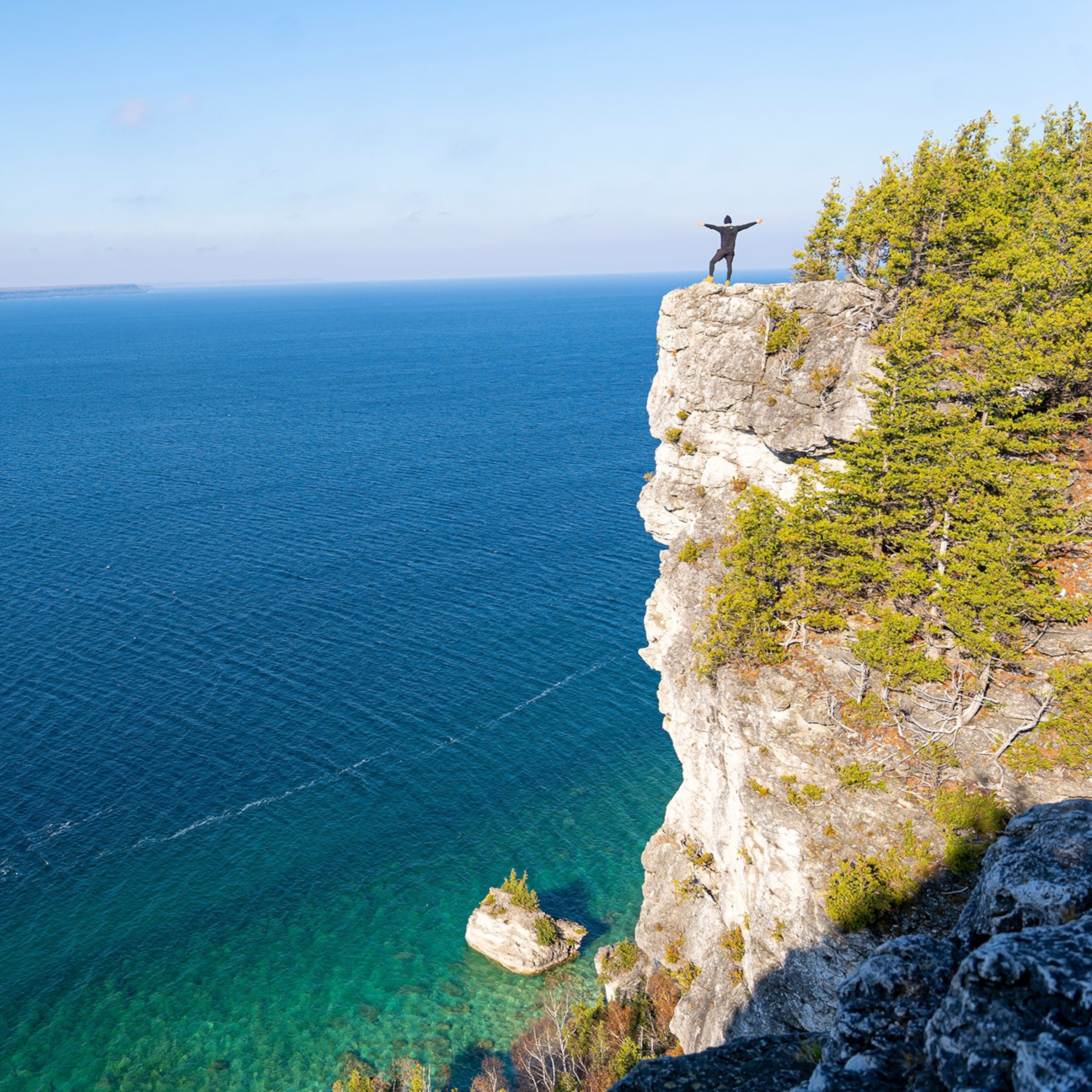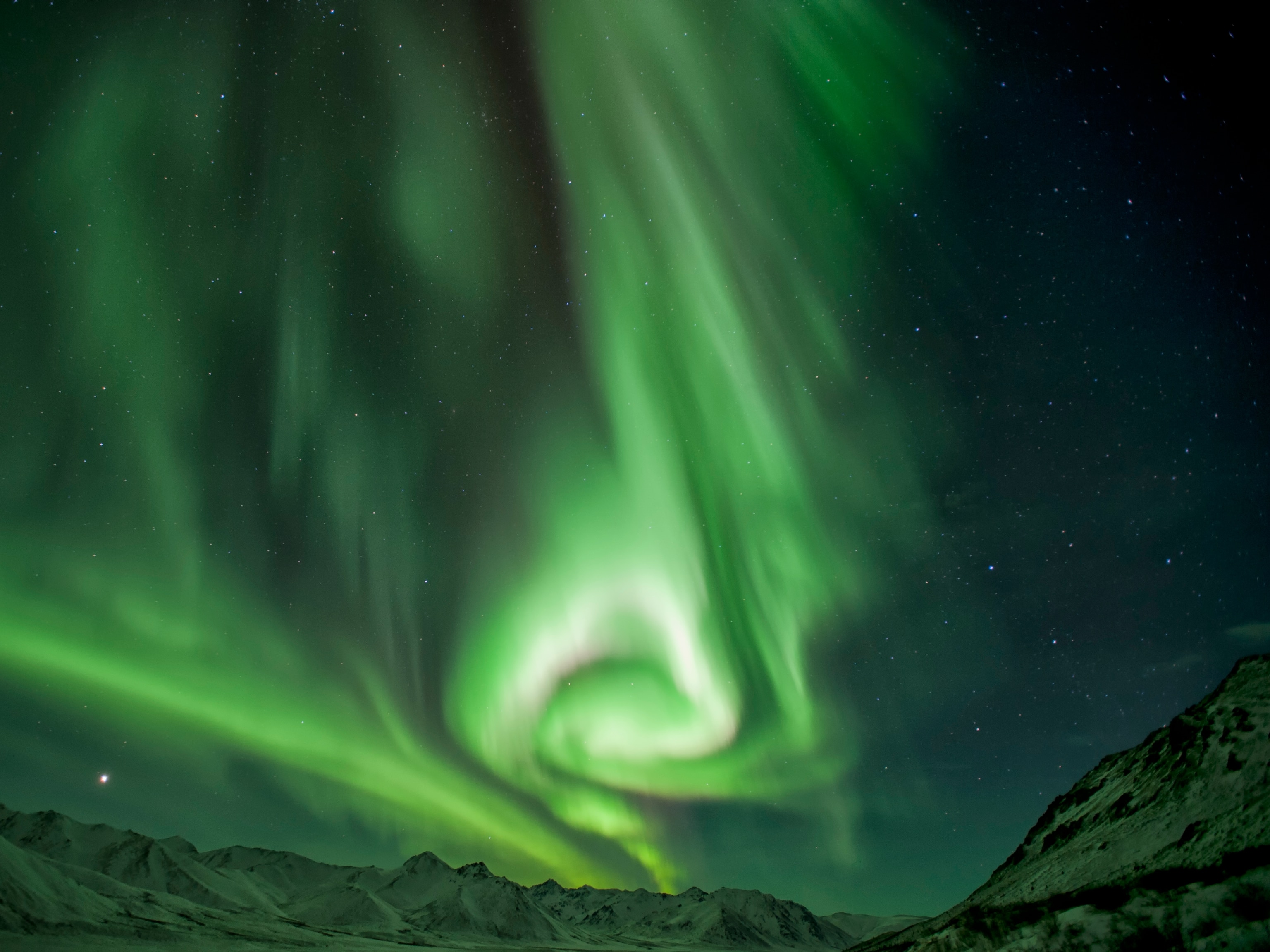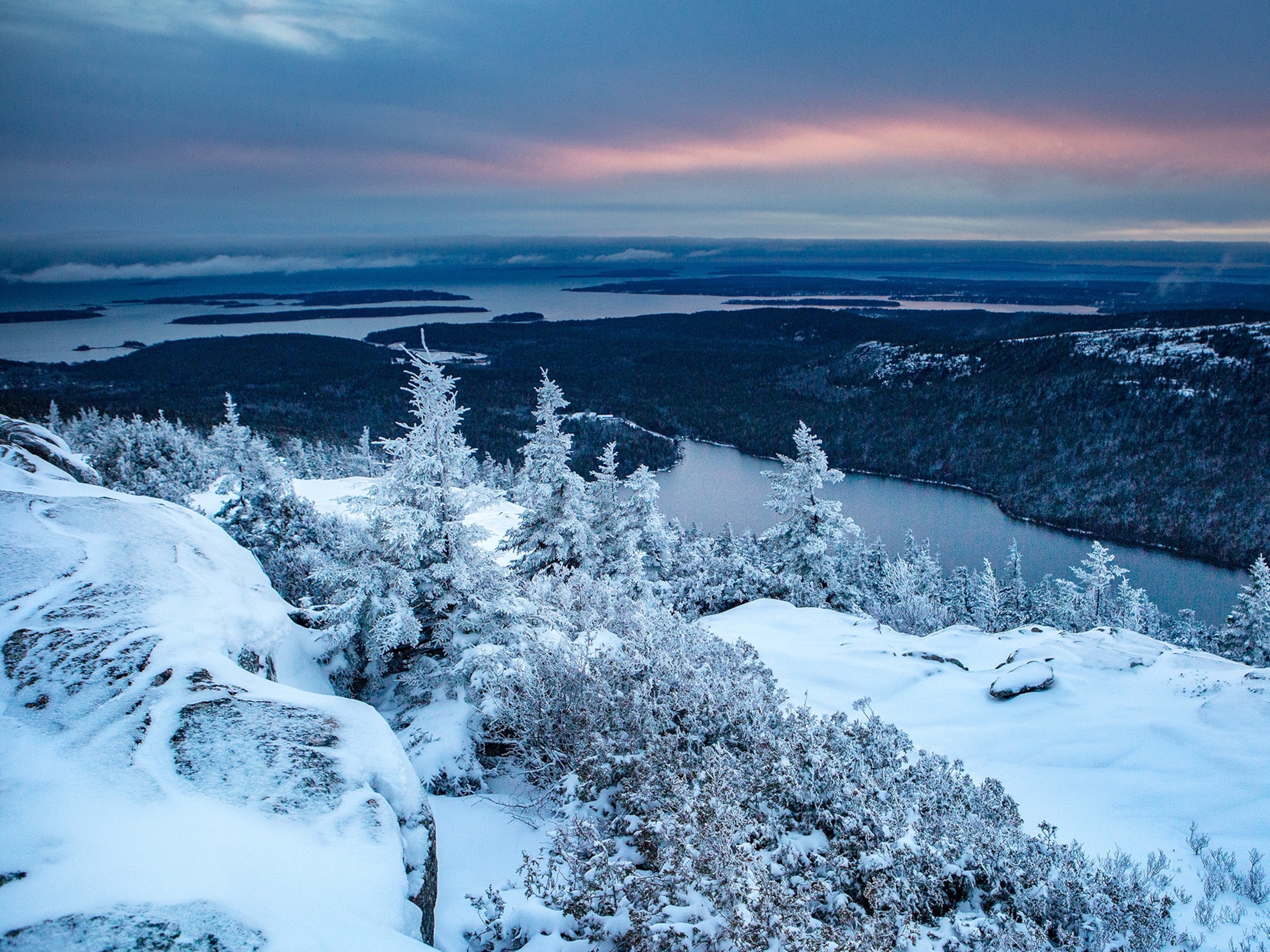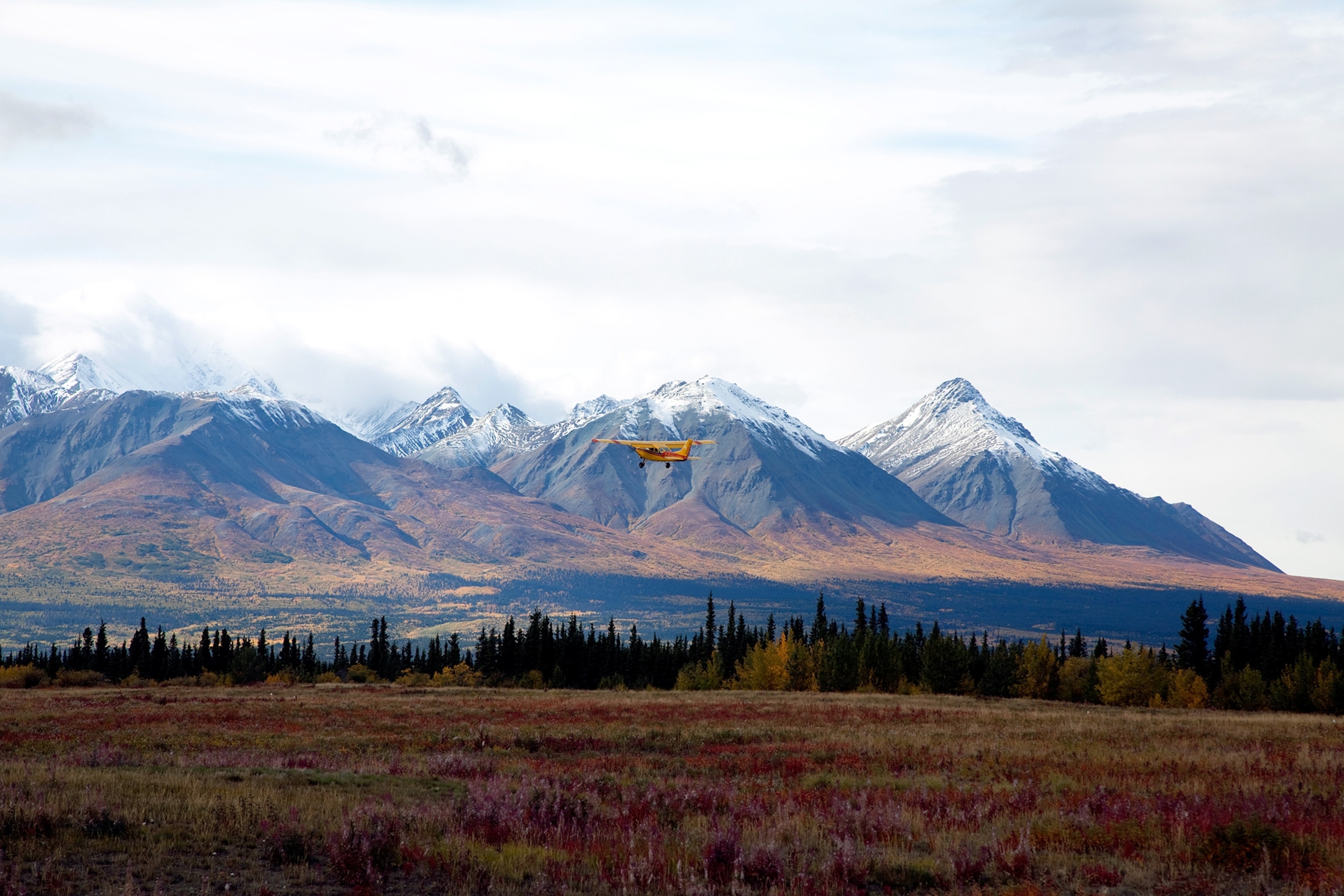
Yukon's Kluane National Park and Reserve: Reaching the Top of Canada
Discover Canada's highest peak, largest ice fields, and most diverse grizzly bear population in Kluane National Park and Reserve.
I have a confession: I am scared of bears.
This is not a writer’s device to set up drama in an article about the great outdoors of the Yukon. I am scared. Particularly when hiking alone. I know you’re supposed to be loud to alert lurking grizzlies, but I am still too Oklahoman to shout out my existence so … brashly. And so here I am, sitting in my car, pitifully, in a gravel camping area trailhead for a flat, leafy, 1.2-mile walk with bucolic views of Yukon mountains. Watching through the windshield, I can see two old-timers drinking beer from lawn chairs and a feisty black squirrel dancing in the shade, practically mocking my reluctance.
Do I go? Seriously, I’m asking.
Kluane National Park is almost all ice. Over 2,000 glaciers—some a kilometer thick—call the area home. About 4 percent of them surge; that means water forms between rock and ice, enabling the glacier to move more than a mile in a month. Others are vanishing. The Yukon has lost 22 percent of its glacial cover due to climate change in the last 50 years. Canada’s highest point, Mount Logan (19,551 feet), is here too, but you can’t see it by road. In fact, very little of the park is accessible by road.
To really experience Kluane, you need to hike, or fly.
I start by flying.

From May to September, fixed-wing planes and helicopters take one- or two-hour flights over glacial tongues leading deep into the mountains. Weather permitting. Usually, one in five days is canceled due to winds. But the last three days have been no-flying days.
“Today we’re lucky,” says my pilot, Jim Trail of Kluane Glacier Air Tours. The young Aussie grew up flying in the Queensland outback and is taking a young Montreal couple, a middle-age Ontario woman, and me into the park to follow the Alsek River to the surging Lowell Glacier.
“We get some bumps here as wind tunnels through,” I hear Jim say through the headphones aboard the five-seater Cessna 207. He’s been flying for six years, and done a few hundred flights in the Yukon, which he compares to outback flying. “It can be a little bit sporty.”
Fortunately it’s not too “sporty.” We gently follow the river valley between the mountains. Jim points out the white specks on the mountain face: Dall sheep. Kluane has the world’s highest concentration of these curly horned creatures. Soon we reach glacial tongues. They’re the color of Ovaltine foam below, cracked with pockets of bright blue lakes in small gashes.
Soon we see giant blue-tipped icebergs floating in a bigger lake. “None of those were here a few days ago,” Jim says.

Dimensions and scale are hard to follow up here. “This is seven kilometers wide here,” Jim notes casually of the Lowell Glacier, which seems to leer upward as if it were touching the sky. I’m stunned. I had figured a kilometer or two at most.
I do hike into Kluane too. Eventually I venture out of my car from that camping area, to do a short hike of wetlands in the village limits of Haines Junction. I quickly meet Doug. Doug is from Victoria, visiting the Yukon for a couple of weeks to camp and hike. We walk together.
“I kinda wanted to see bears,” he says. “But maybe I don’t.”
Having company offers me some comfort. As does the bear spray set in my daypack’s outer pocket. We soon locate bear scat, which I identify using Google Images.
The next morning, I drive an hour north to the 158-square-mile Kluane Lake. I’m slowed by my stops to take in views on the way, as autumn has now hit the Yukon. Passing Christmas Creek, I make a quick U-turn to wander a bit along the babbling water amid red fireweed, gold poplar leaves, lime green pines, and rusty red and wrinkly gray mountain faces.
Just north is the giant gray Kluane Lake, where glacial silt kicks up in the wind like dust devils. This lake’s water used to flow southwest to the Pacific 140 miles away, but a few centuries ago, the Kaskawulsh Glacier cut off its access, so the lake reversed direction—and now takes a nearly 2,000-mile detour northwest through the Yukon River system.
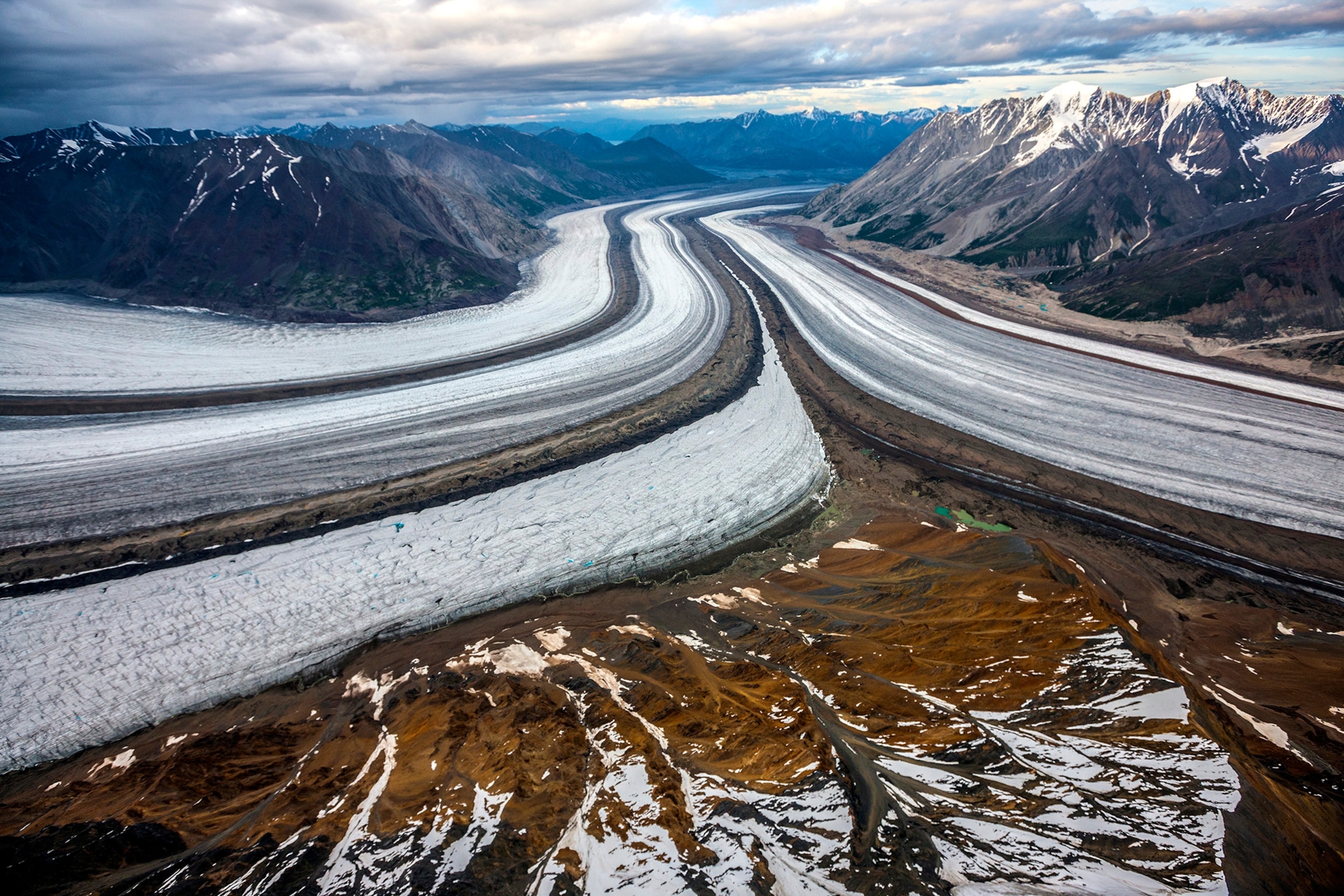
No one is on the beach. I walk onto its pebbly sand, scooping up a handful of little rocks that fall from my fingers in a clean swipe. Across the water to the northwest is the hulking Sheep Mountain, where I’m planning to hike into the boreal forest. I stop at the small national park visitors center to ask about it.
“Two weeks ago we had to close that trail because some grizzly cubs and a mama were on it,” a ranger tells me. “Remember, this is a bear highway.”
Am I really going to do this?
Everyone talks about bears here. Locals don’t worry much but take precautions seriously. The guy who sold me bear spray said, “It’s weird walking without it—I keep looking over my shoulder.”
I pick the Sheep Creek trail, because it’s popular. A dozen cars are in the trailhead lot, but I start out on my own. Empowered by the beauty of the day, I feel good but frequently make noise as I walk slowly. No one ever really tells you how to make noise. I call out “hepp!,” sometimes cough, sometimes clap, once singing the opening verse of “We Are the World.”

And I never see bears.
What I do see is stunning. Walking over pine needles past skinny pines and berry-filled bushes, I can look up to the bald face of the backside of the Sheep Mountain, and see a few Dall sheep in commute. An hour up, I reach a clearing where I sit to eat my lunch and look back over the winding creek below. I trace its path toward Slims River, where glacial silt kicks up, fed by winds that pour over the Kaskawulsh Glacier.
- National Geographic Expeditions
Back in Haines Junction that afternoon, the receptionist at my hotel asks about my day. I tell her about the autumn color and the beauty and the isolation—and also that I’m happy I didn’t see any bears.
“That’s refreshing,” she says immediately. “Some people get so macho about finding them.”
I’m totally fine not being considered macho.
How To Do This Trip
Where to Stay: Haines Junction, about a hundred miles from Whitehorse, is the main access point to Kluane National Park. There are a handful of simple hotels and a couple of places to eat, nothing fancy (yet). Many visitors camp in tents or trailers. Reserve ahead to get a room at the nicest hotel in town, the Raven.
What to Do: At about U.S. $200, the glacier tour of Kluane National Park may be the greatest travel splurge I’ve taken. Several operators offer them. I flew with Kluane Glacier Air Tours in Haines Junction. Rocking Star Adventures flies from Burwash Landing, an hour north of Haines Junction.
Haines Junction’s excellent Kluane National Park Visitor Center has exhibits and a film on the park and First Nations history. Rangers at the back desk offer free hiking maps and advice on conditions. There are 15 main hikes, ranging from a half hour to a week long. There’s also a smaller visitors center at Kluane Lake (and no other services, including food or gas).
The buzzing Village Bakery & Deli in Haines Junction sells excellent premade sandwiches, baked goods, and espresso. They have bear spray for $38 too, and give back a $19 deposit if it’s unused.

